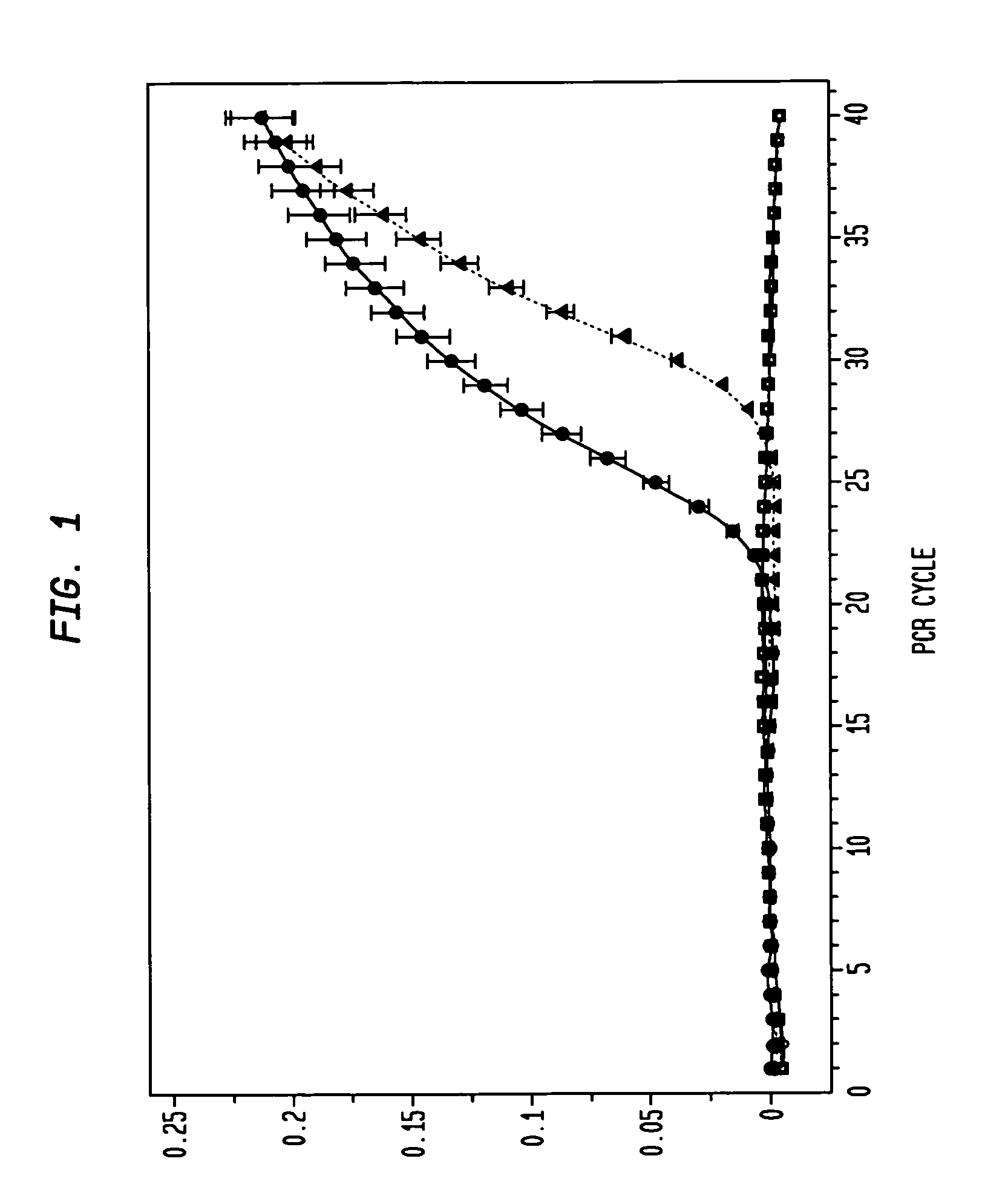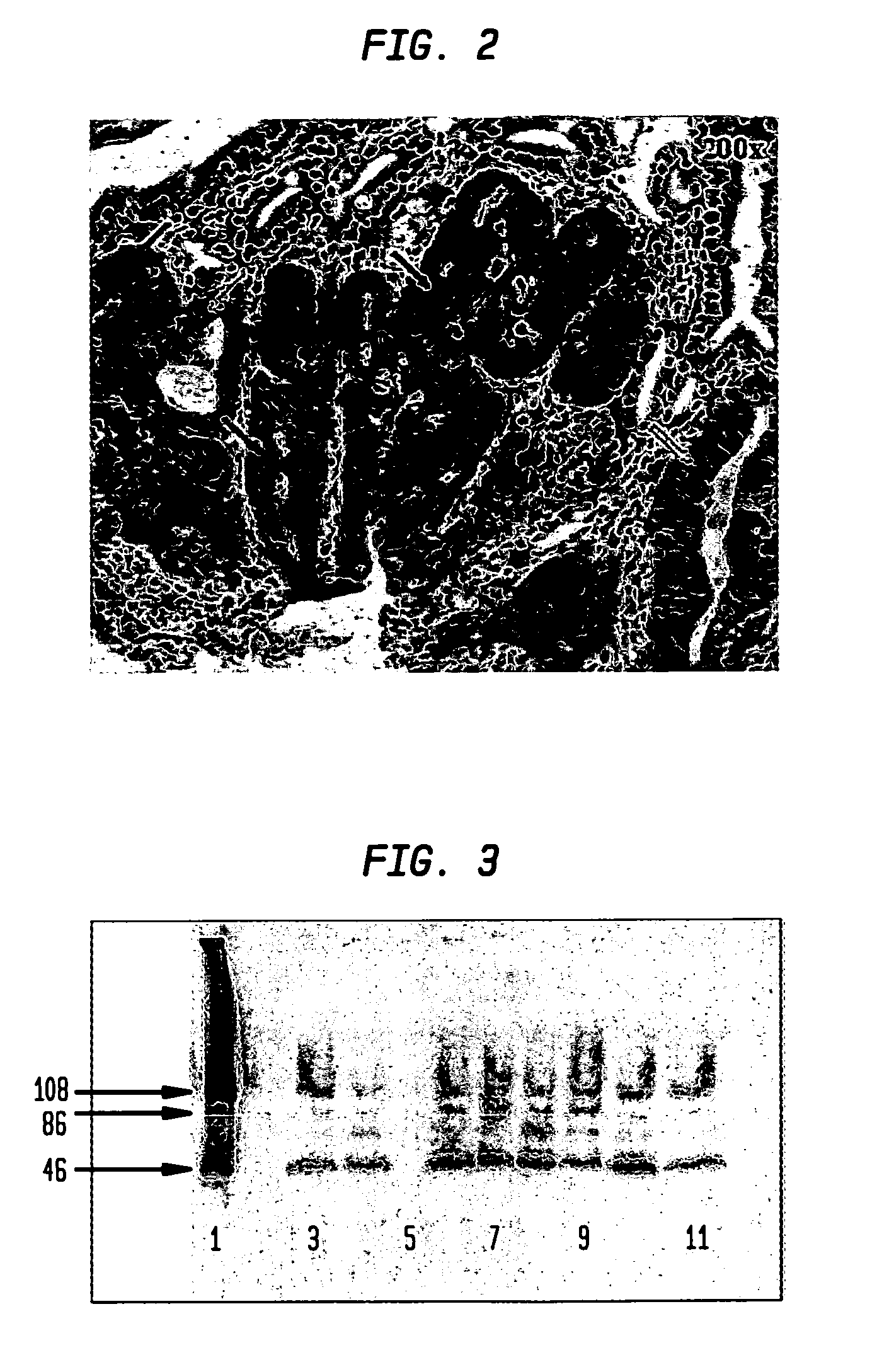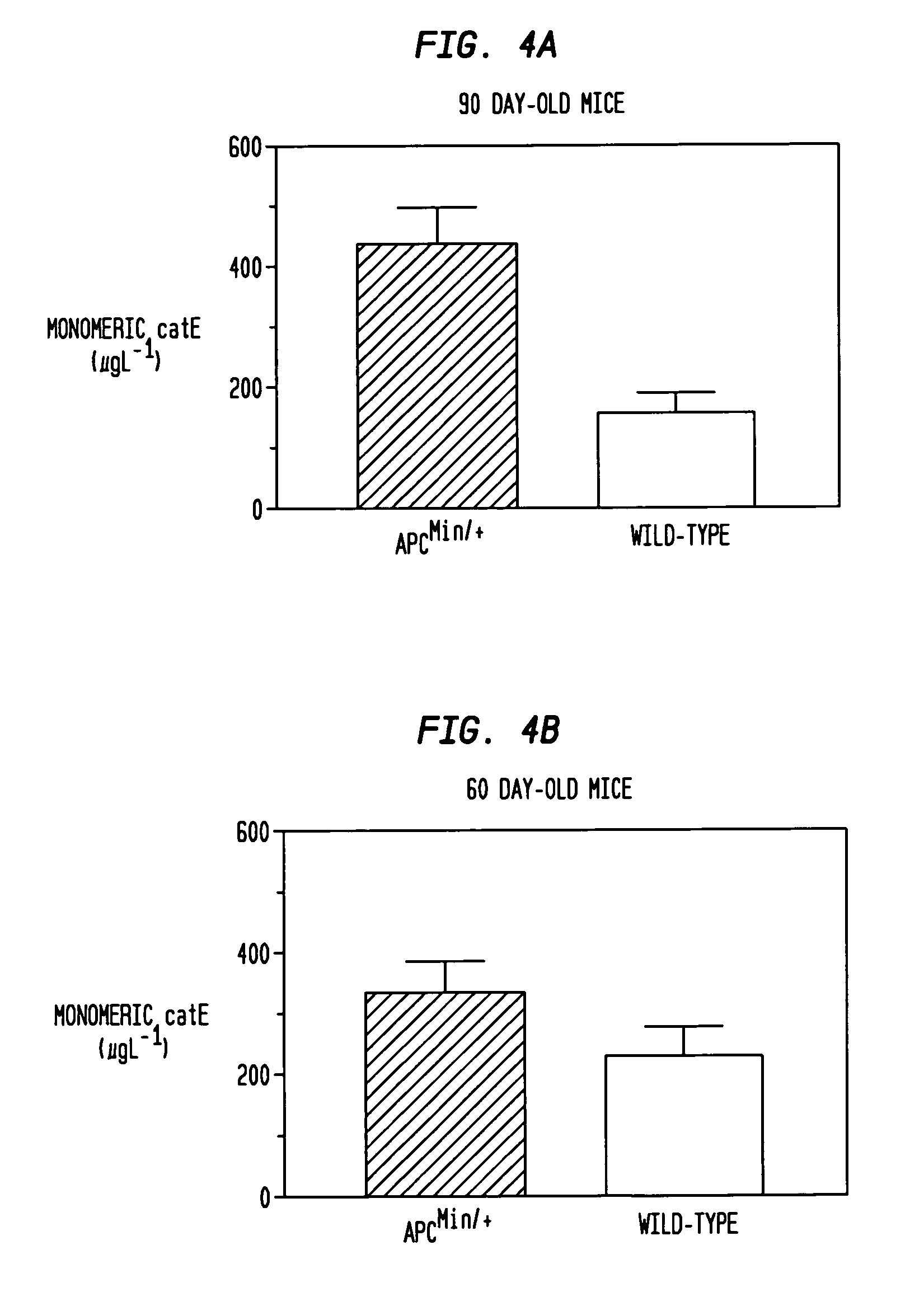Cathepsin E as a marker of colon cancer
a marker and cathepsin technology, applied in the field of colon cancer detection methods, can solve the problems that the detection of tissue or urine cate levels has not yet been established for the diagnosis or detection of colon cancer, and the non-invasive test, such as the urine test, has not yet been established for colon cancer diagnosis or detection, and achieves the effect of non-invasive and readily implemented
- Summary
- Abstract
- Description
- Claims
- Application Information
AI Technical Summary
Benefits of technology
Problems solved by technology
Method used
Image
Examples
example i
Materials and Methods
[0031]The present example sets forth the various materials and methods that were used in generating the disclosure presented herein.
Mice and Tissue Processing
[0032]Mice were maintained in a facility accredited by the Association for Assessment and Accreditation of Laboratory Animal Care (AAALAC), International. Mouse protocols were reviewed and approved by the University of Notre Dame Institutional Animal Care and Use Committee. The APCMin / + colony was generated from C57B16 / J APCMin / + mice purchased from Jackson Laboratories (Bar Harbor, Me.). The mice were kept on a standard rodent diet. Animals were sacrificed by CO2 asphyxiation, and their intestines removed, rinsed in phosphate-buffered saline, and incised. Tissues were immediately fixed with 10% formalin, processed, embedded in paraffin, and sectioned (4 μm). Sections were stained with hematoxylin-eosin (H & E).
Laser Capture Microdissection (LCM)
[0033]Cryosections (8 μm) from the frozen ilea of 90-day old m...
example 2
Real-Time RT-PCR Detection of catE mRNA Expression in APCMin / + Adenomas
[0043]The present example demonstrates the utility of the invention for providing an RNA profiling screening method for diagnosing and / detecting and monitoring the progression of colon cancer. In this regard, the present example demonstrates that an increase in catE mRNA transcription, and catE expression (monomeric catE) is markedly increased in dysplastic cells, but not in normal (i.e., from non-dysplastic tissue) cells.
[0044]To ensure a homogeneous population of cell types for RNA isolation, LCM was employed for the selection of intestinal epithelia corresponding to adenomatous APCMin / +, normal APCMin / +, and normal wild-type tissue. Total mRNA from wild-type spleen, in which abundant levels of catE transcript have been previously established [7], was employed as an exogenous positive control.
[0045]The results of the real-time RT-PCR monitoring are presented in FIG. 1. After 40 PCR cycles, no amplification of c...
example 3
Immunohistochemical Detection of catE in Intestinal Lesions of APC Min / + Mice
[0046]The present example demonstrates that dysplastic tissue is immunohistochemically detectable by the presence of specifically staining tissue using an anti-catE antibody, and that the intensity of immunohistochemical staining obtained is correlated to the severity of the dysplastic lesion.
[0047]Intestinal sections from a total of 33 90-day old APCMin / + mice were subjected to immunohistochemical analyses with a commercially available polyclonal antibody to catE. Examined sections manifested gastrointestinal intraepithelial neoplasia (GIN) lesions and adenomas; no adenocarcinomas were observed. A representational section of an APCMin / + mouse intestine (FIG. 2) shows catE staining in all regions of the epithelia manifesting mild to severe dysplasia. Normal-appearing areas of the intestine are devoid of detectable staining, as was also observed for sections from wild-type mice. A direct relationship is show...
PUM
| Property | Measurement | Unit |
|---|---|---|
| Fraction | aaaaa | aaaaa |
| Atomic weight | aaaaa | aaaaa |
| Concentration | aaaaa | aaaaa |
Abstract
Description
Claims
Application Information
 Login to View More
Login to View More - R&D
- Intellectual Property
- Life Sciences
- Materials
- Tech Scout
- Unparalleled Data Quality
- Higher Quality Content
- 60% Fewer Hallucinations
Browse by: Latest US Patents, China's latest patents, Technical Efficacy Thesaurus, Application Domain, Technology Topic, Popular Technical Reports.
© 2025 PatSnap. All rights reserved.Legal|Privacy policy|Modern Slavery Act Transparency Statement|Sitemap|About US| Contact US: help@patsnap.com



